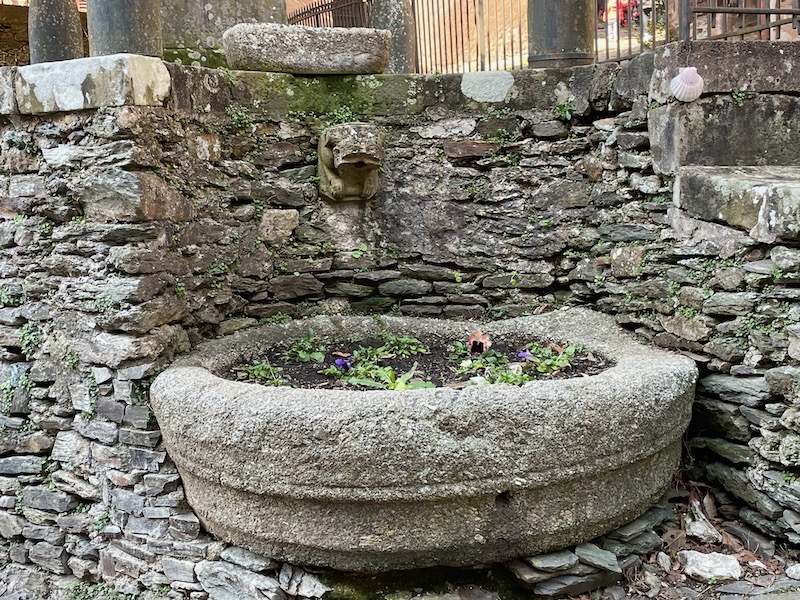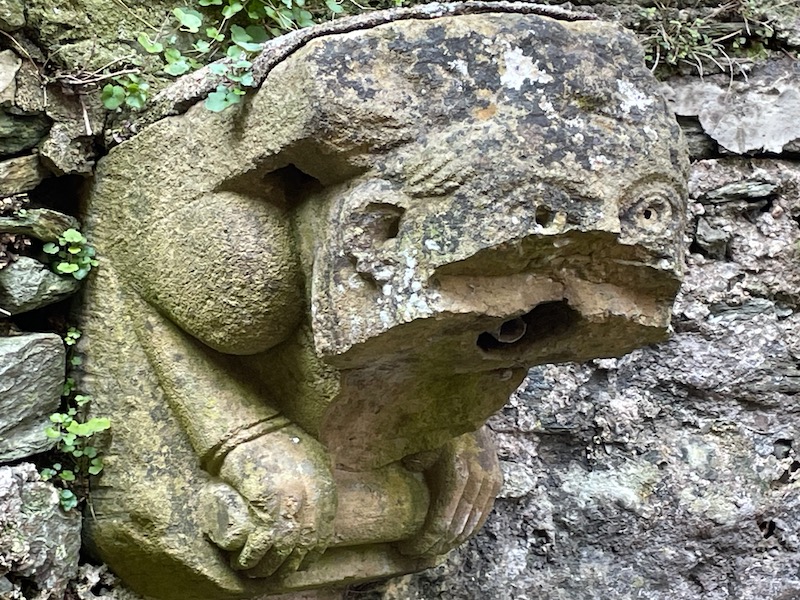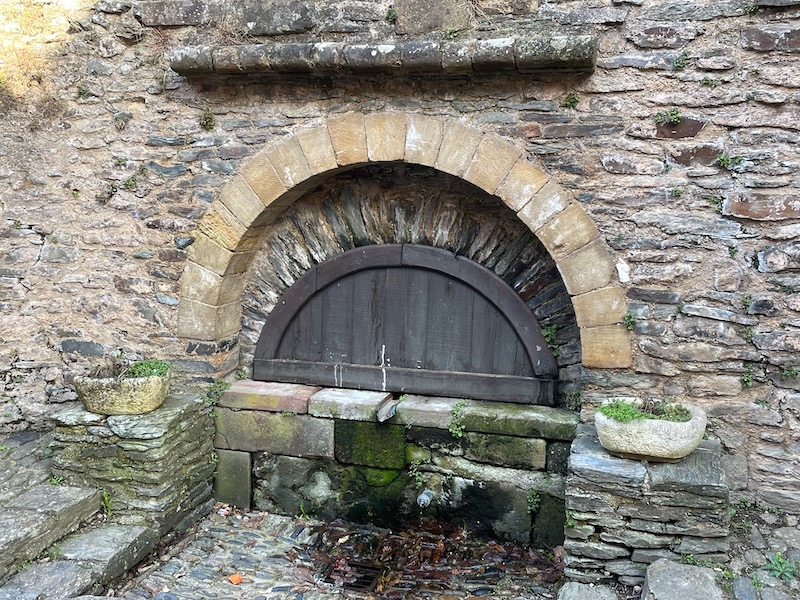Our Blog - Snow Trip 2025 - Conques, France
At the end of the 8th century, a hermit named Dadon chose to retire in the middle of nowhere (almost literally). A few years later, a small community of Benedictine monks settled here and created an abbey. In 866, the monks were granted relics of a young Christian girl that was martyred nearby, named Sainte Foy (Saint Faith in English). Conques became then a monastic town of importance with pilgrims stopping here on their way to Compostela. The economic activity, as the town grew, came mainly from mills and tanneries in the river valley and artisans workshops scattered nearby. It is quite a tiny little village with Wikipedia listing the population at 255 people, being on a steady downhill trend from a high of almost 1500 around 1850.
We parked and headed into town to see the main historical site, the Abbey Church of Sainte Foy. A few general pictures of the town and the surrounding hills and valleys. There are quite a few half-timbered houses mixed amongst the stone houses that line the streets climbing up the side of one of the hills, with lots of little staircases going between them. The last picture is a semi-bad attempt to show the road going down and turning to the right, going between the half-timbered house on the right and the stone house on the left.
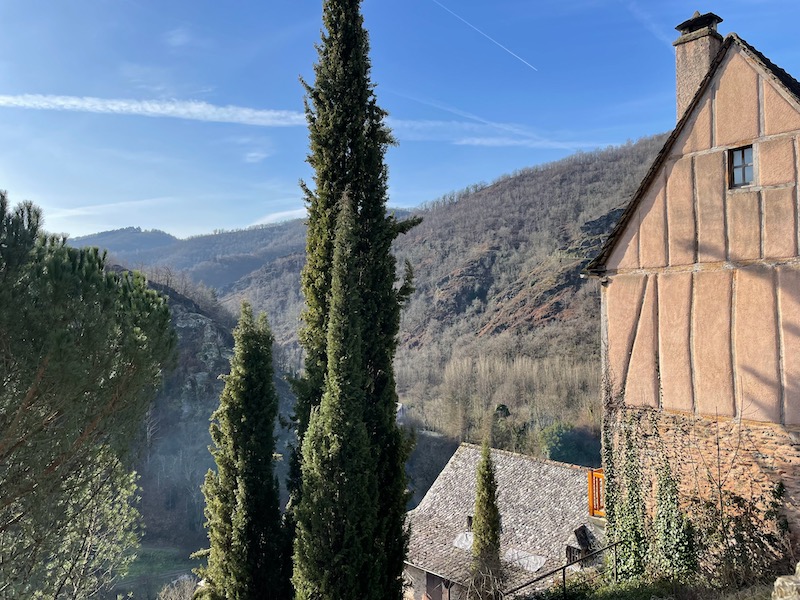
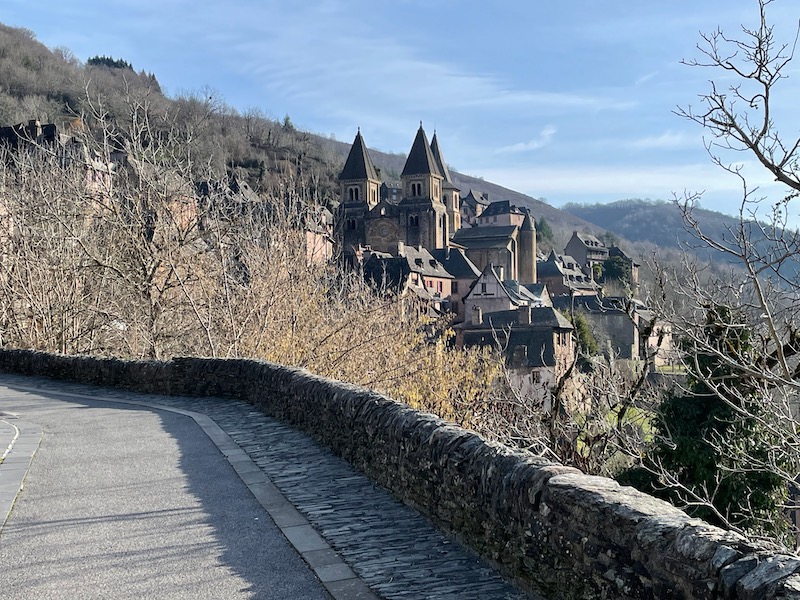
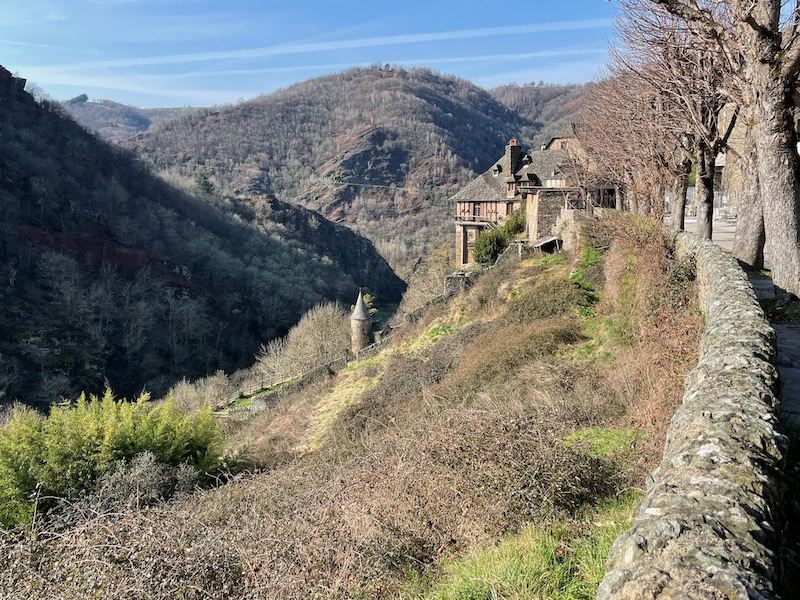
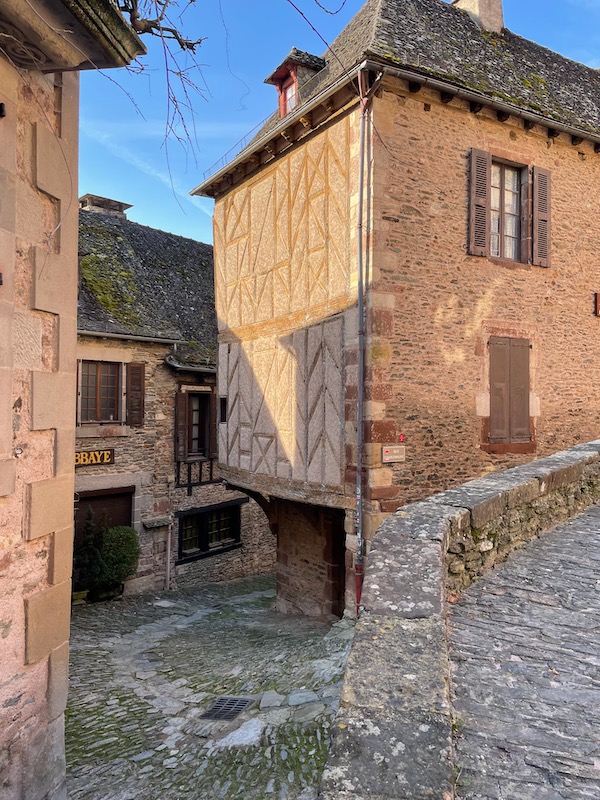
Right in the middle of the village is the Sainte-Foy de Conques abbey church. It was built in 1041 and remained a Benedictine abbey until 1537. It is dedicated to Sainte Foy (Saint Faith), who was tortured to death by the Romans when she was a young girl and refused to make pagan sacrifices. The Abbey saw a decline starting in the 13th century and it was damaged by a fire and pillaged during the Wars of Religion in 1568. It made a small comeback before the French Revolution, after which the cloister was partially demolished to be used as building material for the local villagers. It was restored in the early-to-mid 1800's, and then there was another large bit of work done in the past few years.
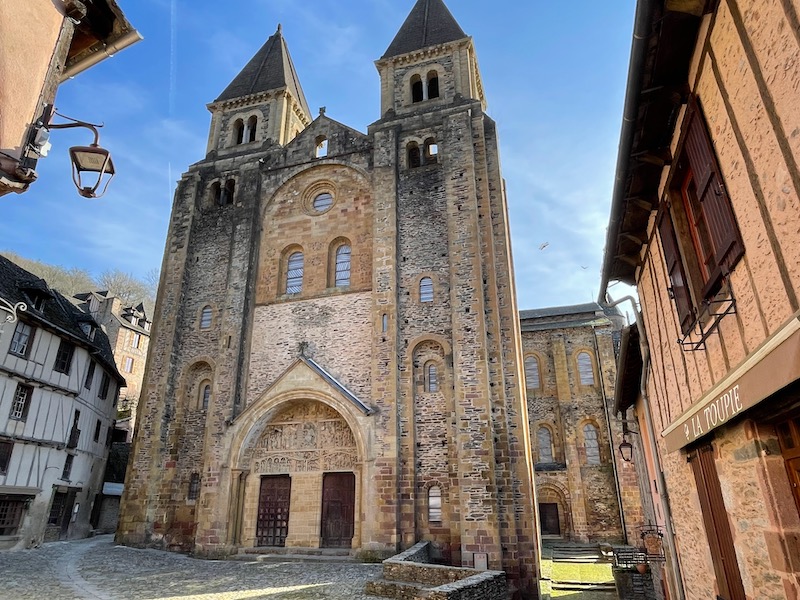
The most impressive part of the church is the rounded tympanum over the front doors, which shows the story of Salvation and the Last Judgement, according to the Gospel of Matthew. It was sculpted out of 24 blocks of yellow limestone that were sculpted first, and then installed over the door. If you look closely, you can see that some of the original paint color remains.
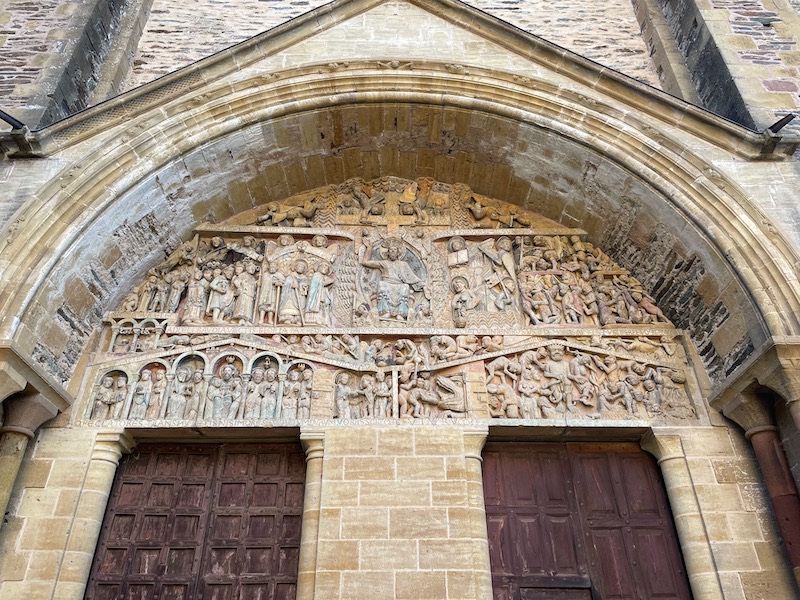
Here in the middle of the lower register we see Abraham with the Holy Women and then another scene with a damned man pushed by a demon into the jaws of the Leviathan.
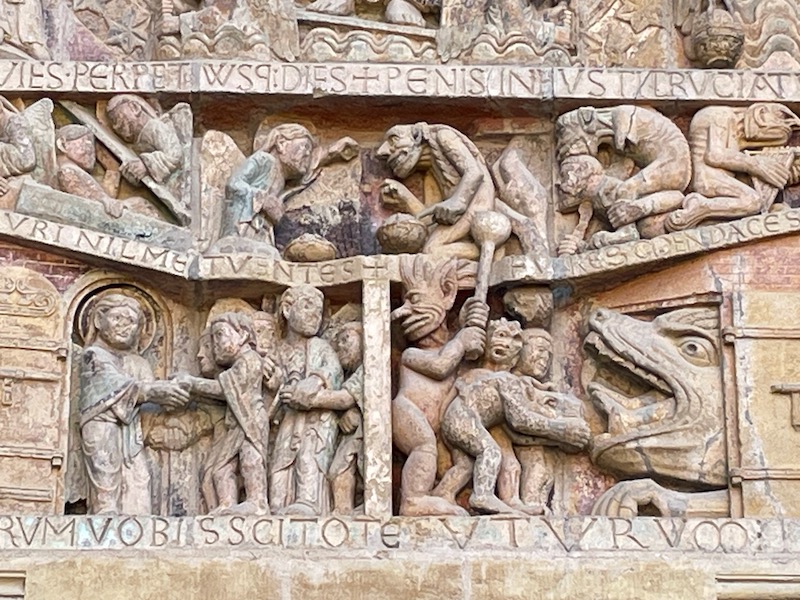
To the left of this is the representation of Paradise, with Abraham holding in his arms two chosen ones (perhaps symbolizing the Holy Innocents), carrying sceptres or short flowered stems.
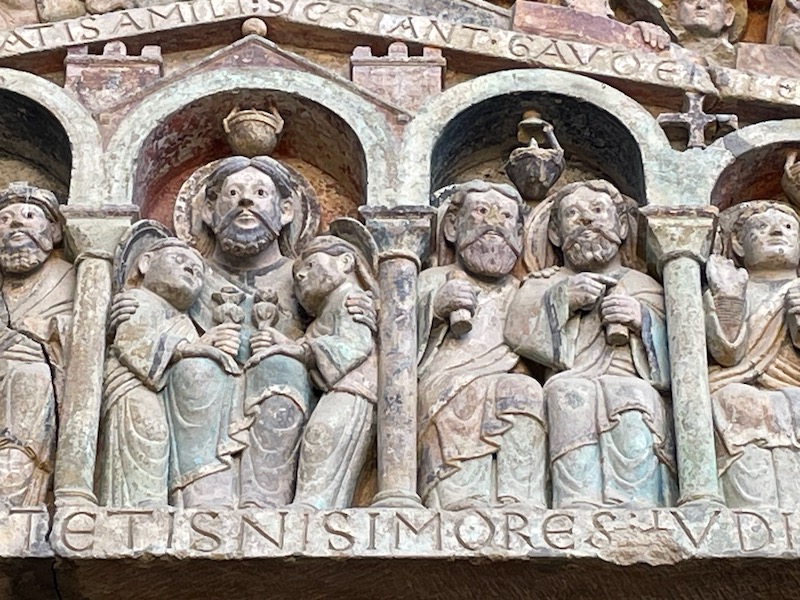
And to the left of the Leviathan is the depiction of Hell.
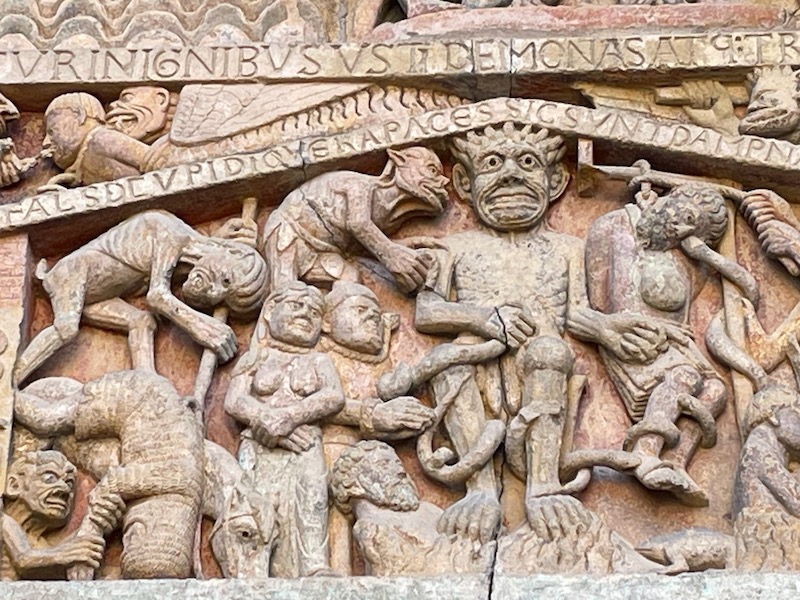
The middle register has Christ in the middle and this group representing the abbot, the king, the clerics, and you can make out Saint Peter holding the key.
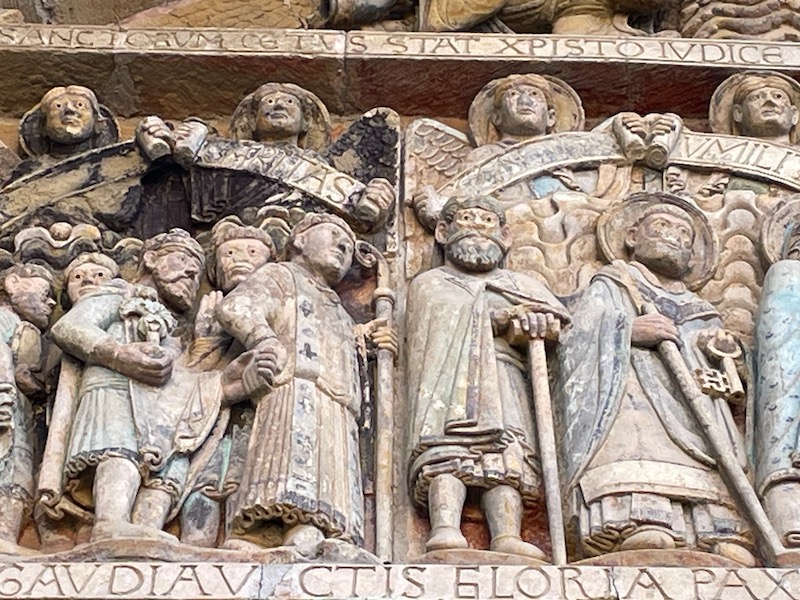
The interior is quite tall and open, without much highly-visible decoration. One thing that you notice is the amount of light that is inside, which is thanks to new stained-glass windows, installed in 1994, that are made of translucent glass (no colors, no stories, no Saints). It is also very Romanesque, with all of the arches on the lower and upper parts of the church being rounded Romanesque-style arches..
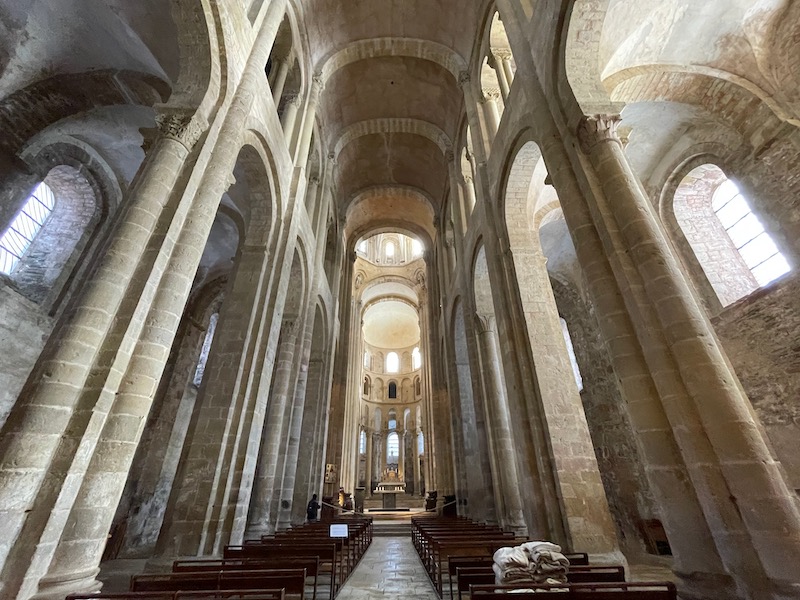

These are old frescoes from over the door going into the cloister, but I don't have any information on how old they are.
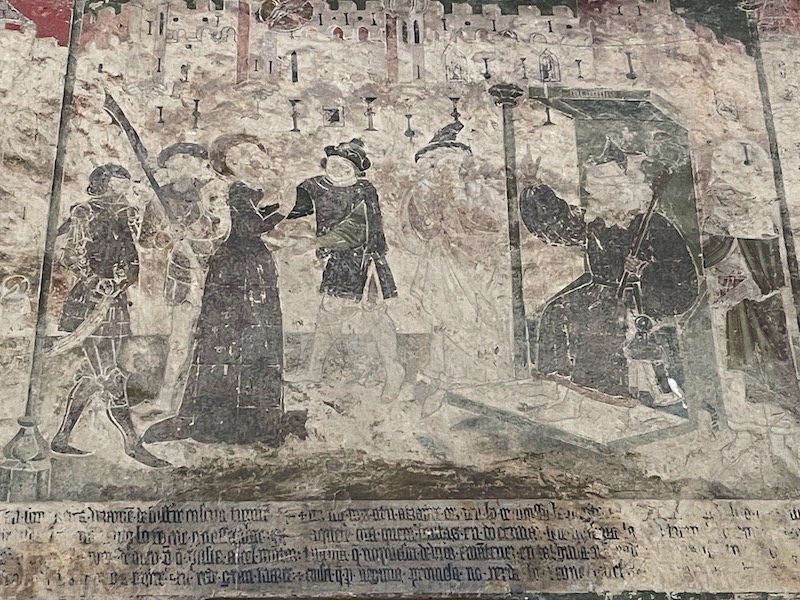
There are a few very nice altarpieces, like this one dedicated to Sainte Foy, which was added during the Baroque period.
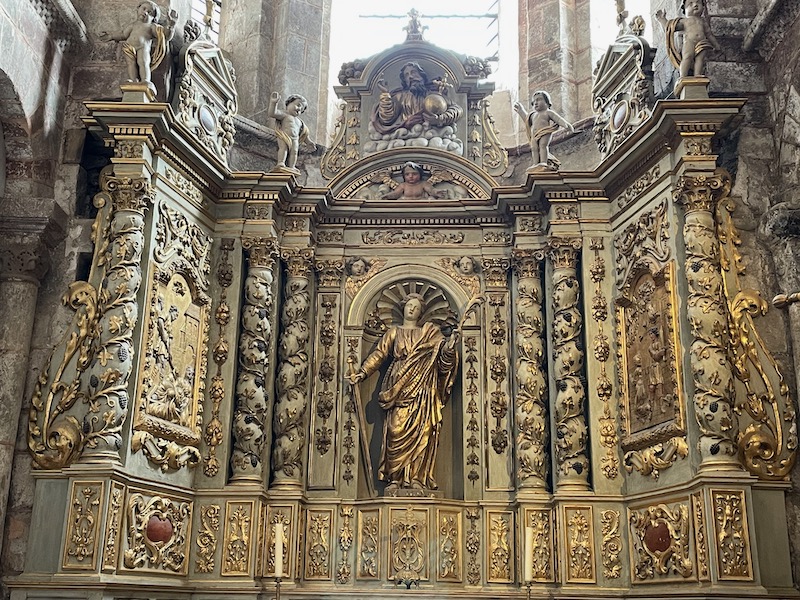
There are nearly 250 sculpted capitals that are examples of Romanesque art, this is one of the nicest ones that I found.
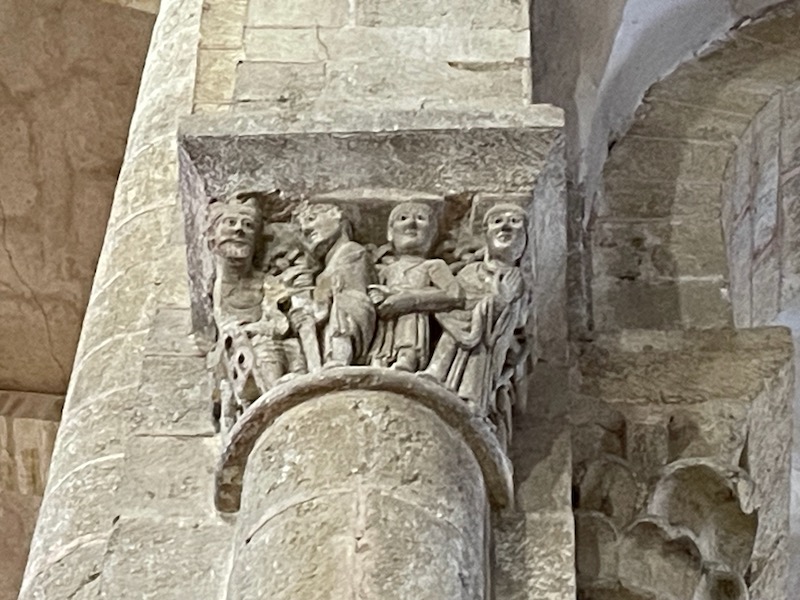
The wooden choir stalls are pretty basic with the exception of the misericord (or mercy seat). This small carved part that is visible when the chair is closed was used as a support the person when they were standing.
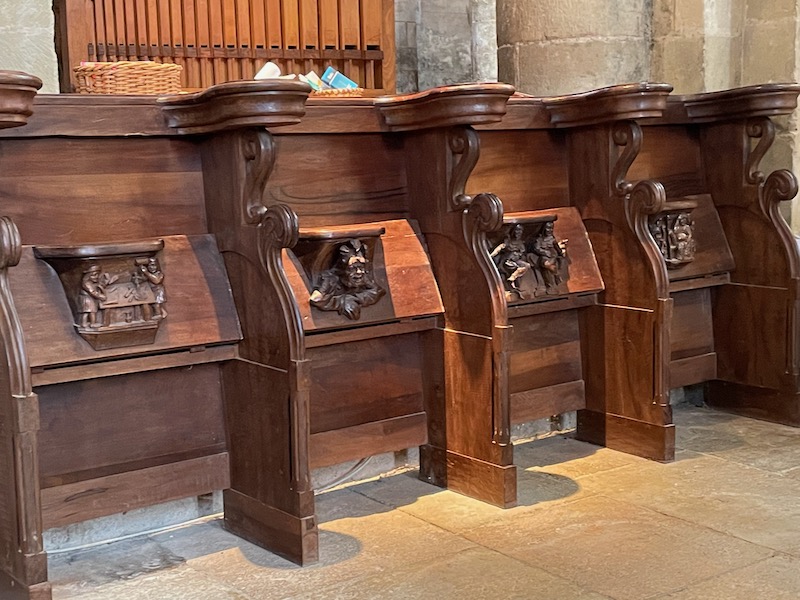
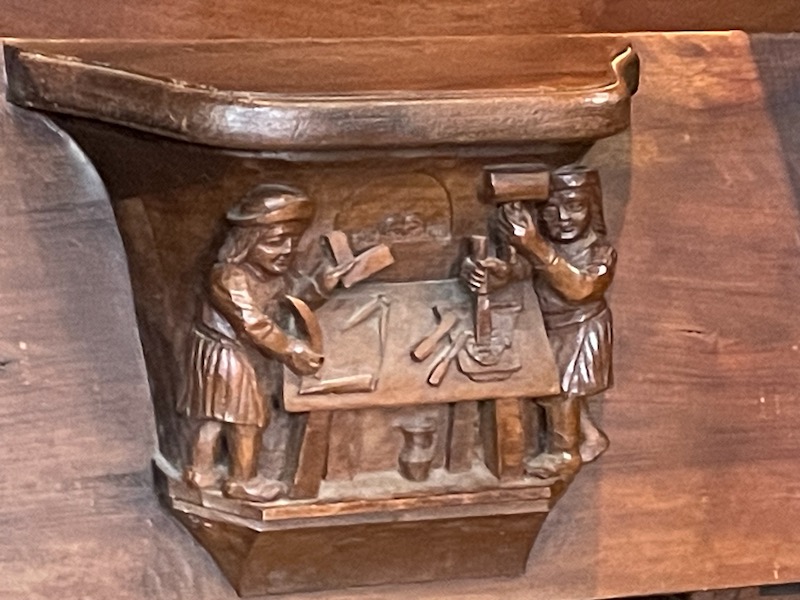
Stepping outside, we find the remains of the cloister (only 1 wing remains) and the water basin of a large fountain that has been reassembled and restored. Around the outside are sculpted columns with little heads between them. There are a few nice capitals that are still intact on the cloister as well.
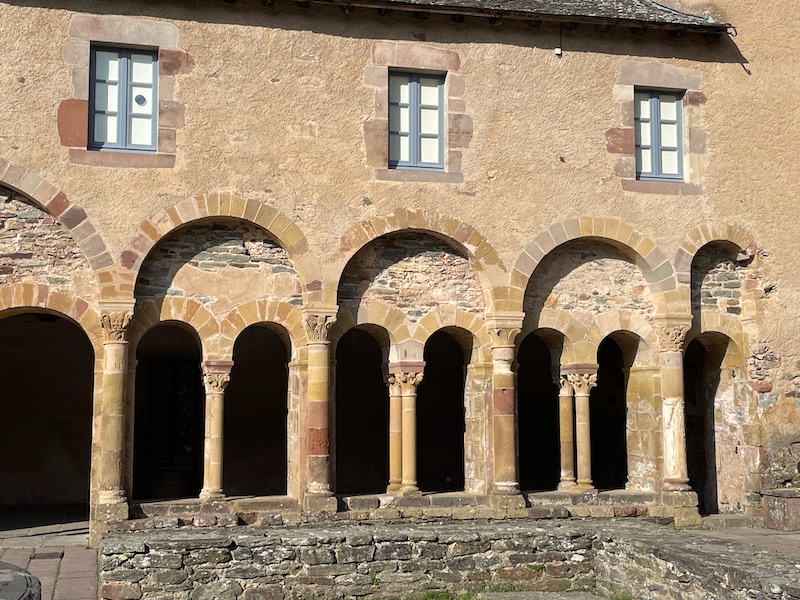
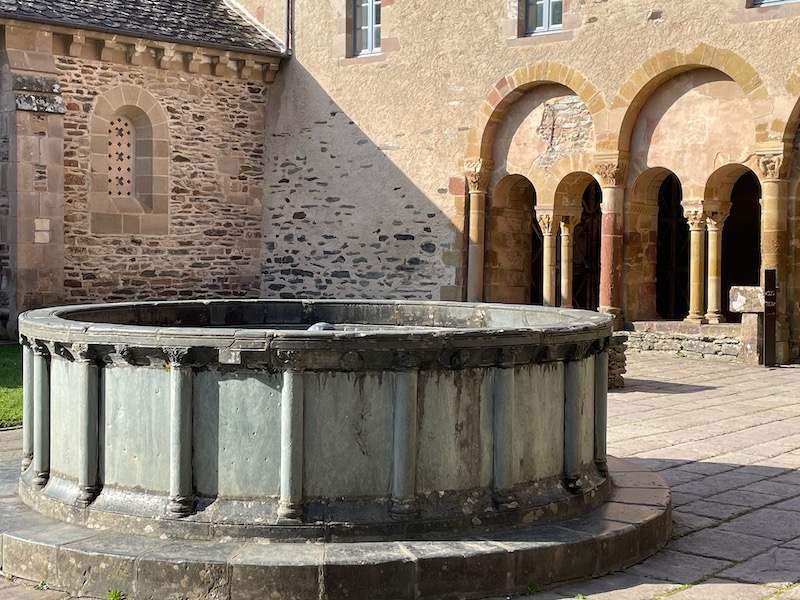
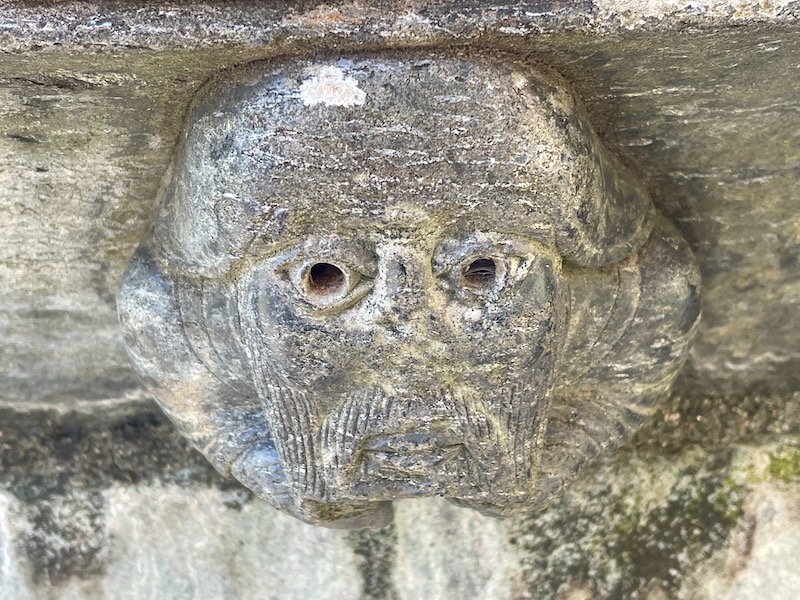
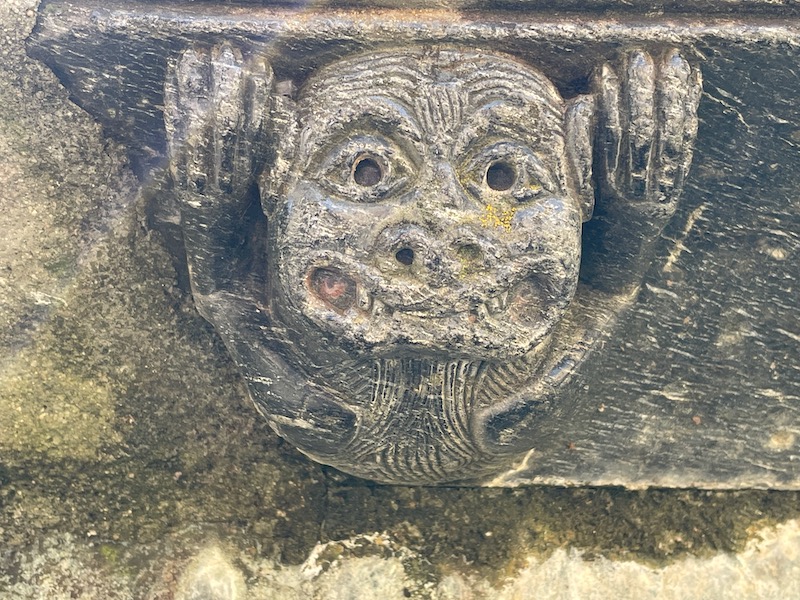
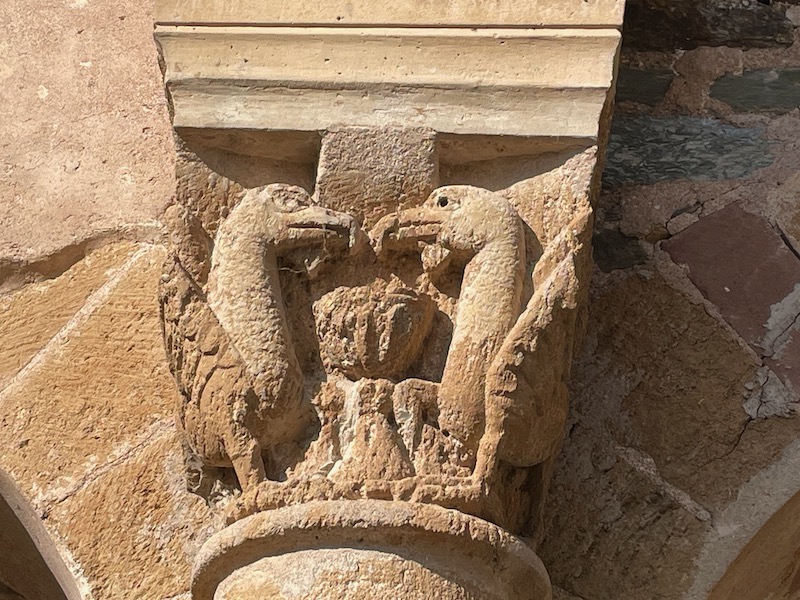
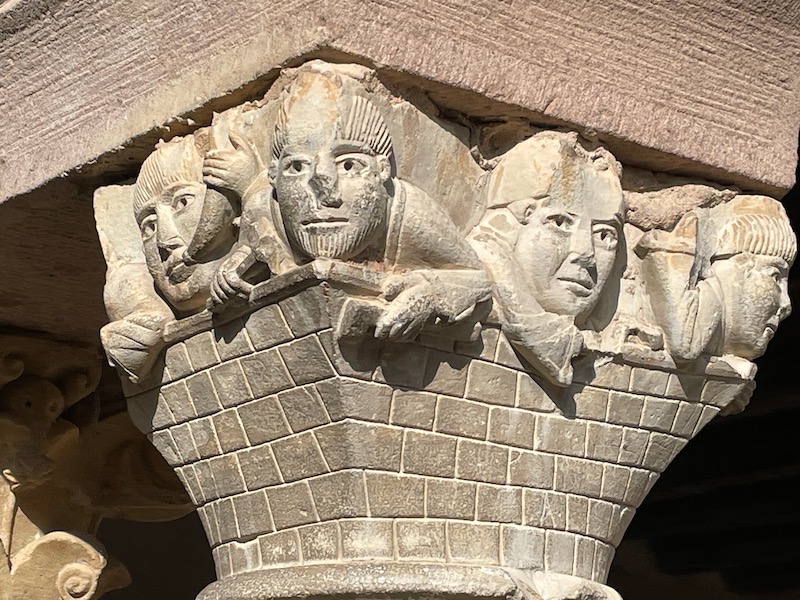
Then a view from around the back-side and up a bit, looking down. I mentioned some restoration work was done recently, much of it on the roof. They had a bunch of informational panels describing the work of removing all of the roof tiles (which are slate), adding additional wooden support beams, and then remaking and reinstalling the slate tiles. They had a little section that shows how the roof tiles are chiseled into shape and then nailed in place.
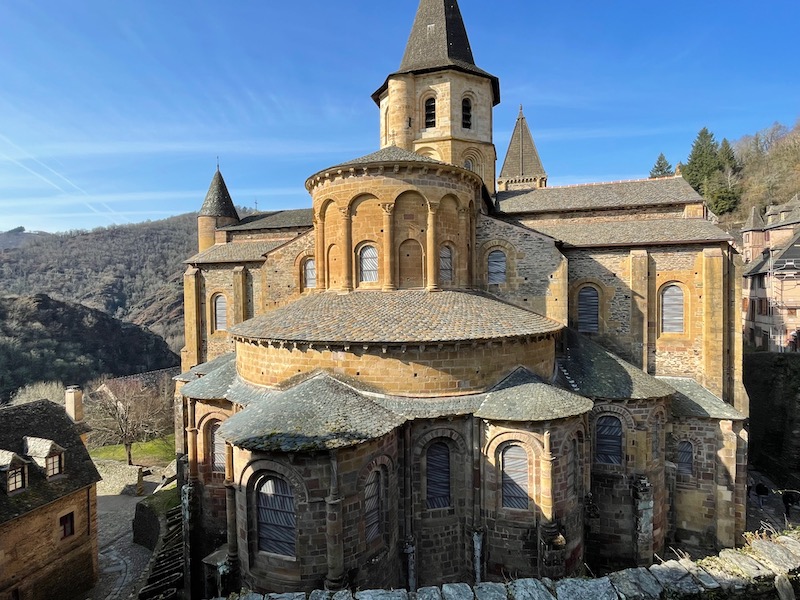
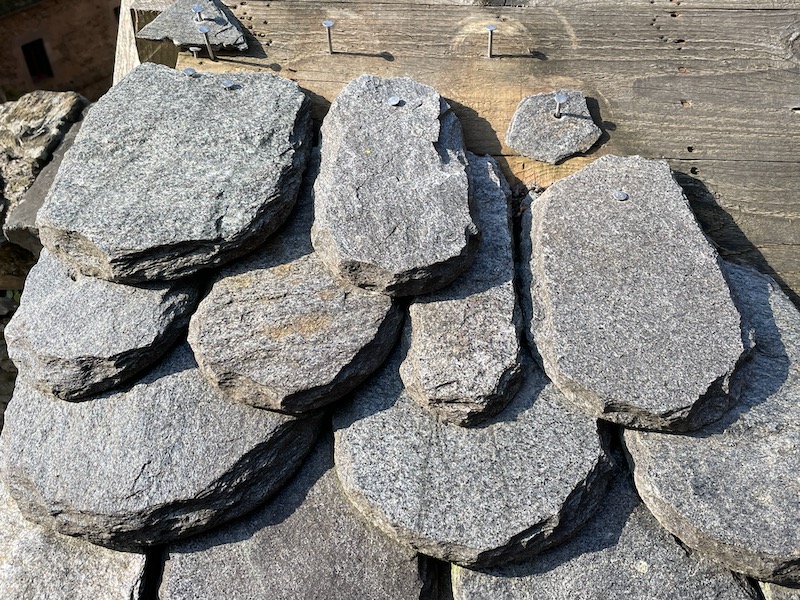
And then 2 different fountains in town, the first one showing a white scallop shell (upper-right) for the path of Saint-Jacques de Compostela.
